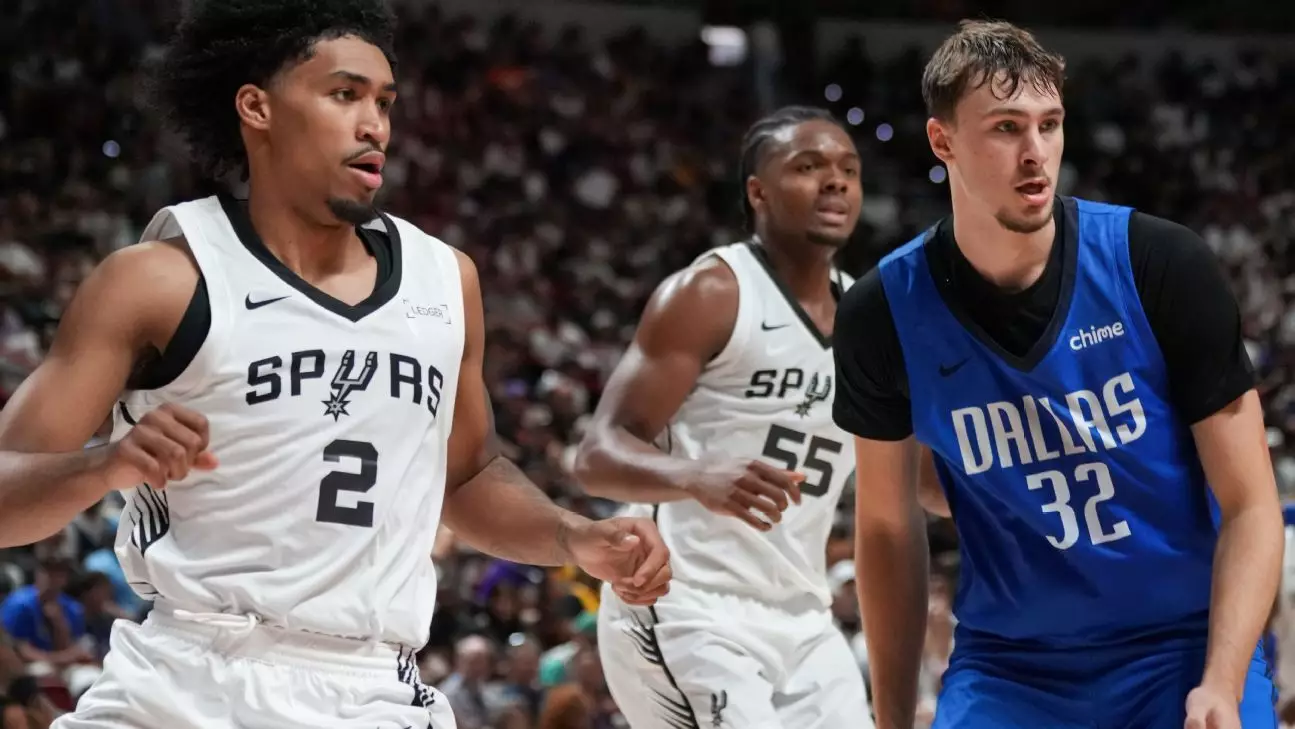In the vibrant pulse of Las Vegas, where hopes are high and the basketball season feels imminent, the spectacle of the NBA summer league often acts as a litmus test for future stars. Yet, beneath the glamour and the crowd-pleasing dunks lies a complex debate about the true potential of young players like Cooper Flagg and Dylan Harper. While their performance at the Thomas & Mack Center paints a picture of undeniable talent, it is crucial to scrutinize whether this is an authentic indication of future greatness or simply a fleeting moment amplified by the hype machine.
The narrative surrounding these prodigious talents tends to oscillate between awe and skepticism. Flagg’s commanding 31-point performance highlights a raw, electrifying nature. Still, it’s essential to question whether these summer league numbers are truly predictive of NBA success or just the warm-up acts in a longer, more uncertain development process. Similarly, Harper’s return from injury and immediate offensive impact provide compelling storylines, but should we be overestimating their immediate contributions? These are still players navigating the rough waters of competitive basketball, and their summer league outings often reflect more their potential than their finished product.
What concerns me is the tendency for media and fandom to adopt a hero’s narrative prematurely, elevating these young talents to mythic proportions before they have faced consistent top-tier resistance. We’ve seen countless prospects dazzle in summer league only to find the NBA’s demanding pace and strategic defenses a brutal awakening. The danger lies in conflating early promise with guaranteed stardom, fostering unrealistic expectations for both the players and the fans alike.
The Politics of Hype and the Centering of Potential
From a broader perspective, this obsession with—and the subsequent marketing of—potential elite players reflects a deeper societal tendency: the desire for instant gratification. Fans are drawn to stories that promise immediate change or salvation for struggling franchises. The NBA capitalizes on this by framing these summer league battles as the imminent dawn of a new era, often neglecting the grueling, incremental work that true development entails.
This phenomenon also raises questions about equity and access within the sport. The spotlight beams brightest on a few select prospects, overshadowing the countless underdog stories and overlooked talents striving to carve out their own paths. The intense focus on Flagg and Harper risk creating a dichotomy—either they will become the next legends or they will fade into the background—thus neglecting the nuanced reality that most players occupy amid the spectrum of success.
Moreover, the tendency to overlook broader systemic issues within the sport exacerbates this problem. How often do we see resources, training, and coaching disproportionately allocated toward those already perceived as “future stars”? Such dynamics threaten to reinforce existing inequalities within the league’s talent development pipeline, undermining a fair and progressive vision for basketball that values diverse paths and efforts.
Reevaluating the Impact of Youth and Hype in the NBA
The spectacle of two highly touted rookies facing off is undeniably exciting, especially in a city that thrives on spectacle and entertainment. Yet, the real test of their potential—if we’re honest—will not transpire in summer league games or highlight reels. It resides in their ability to adapt to the relentless grind of an NBA season, manage expectations, and continuously improve under pressure.
From a liberal-centered viewpoint, the obsession with immediate stardom raises ethical questions about the commercialization and commodification of young athletes. Are we putting undue pressure on these teenagers to carry the hopes of franchises and fans? Is our culture fostering a toxic environment where hype and promise are valued more than resilience, work ethic, and character?
There’s a need for a shift in narrative—one that recognizes the importance of patience, holistic development, and mental fortitude. We should celebrate their raw talent without elevating it to unreachable heights and instead foster a supportive environment that prioritizes sustainable growth. Supporting players as they grow—both on and off the court—creates a healthier, more equitable league that values human development over quick wins and viral moments.
While Flagg and Harper’s summer league performances ignite a sense of hope and excitement, it’s essential to approach such displays with tempered optimism. The future of basketball is not solely decided by early flashes of brilliance but by the resilience and growth that endure beyond the spotlight. Turning hype into reality demands patience, awareness of societal biases, and a commitment to equitable development—values at the heart of the liberal outlook that champions fairness, progress, and genuine opportunity for all.


Leave a Reply